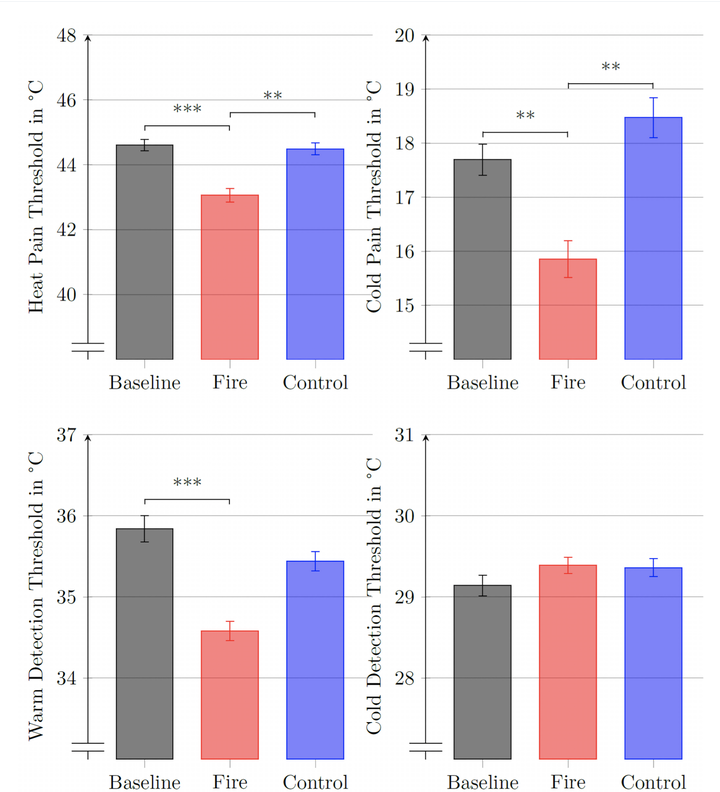 Mean thermal pain and detection thresholds for each condition. The whiskers denote the standard error. Connected bars represent significant difference (∗= p < .05, ∗∗ = p < .01, ∗∗∗ = p < .001).
Mean thermal pain and detection thresholds for each condition. The whiskers denote the standard error. Connected bars represent significant difference (∗= p < .05, ∗∗ = p < .01, ∗∗∗ = p < .001).
Abstract
Augmented Reality (AR) overlays computer-generated visual, auditory or other sensory information onto the real world. Due to recent technological advancement in the field, it can become increasingly difficult for the user to differentiate between sensory information coming from real and virtual objects, leading to interesting perceptual phenomena. For example, an AR experience in which users can experience their own hands in flames has been shown to elicit heat illusions on the affected hands. In this study, we investigate the potential that AR has for top-down modulation of pain and thermal perception. We assessed thermal pain and detection thresholds on the participant’s right hand while covering it with realistic virtual flames thanks to an AR headset. We compared this experience to a baseline condition with no additional stimuli and to a exploratory condition in which the hand was covered by unrealistic blue visuals. We found that experiencing a virtual burning hand induces analgesic as well hyperalgesic effects as participants begin to feel heat related pain at lower temperatures and cold related pain at higher temperatures. The experience also impacts significantly on the lowest temperature at which participants starts perceiving warmth. Unrealistic blue visuals do not affect the thresholds corresponding to the baseline condition. Our research confirms thus earlier experiments demonstrating that pain and thermal perception can be manipulated through AR, while also providing quantitative results on the extent of this effect.